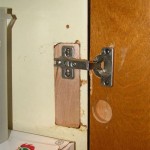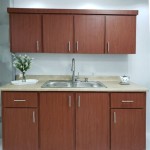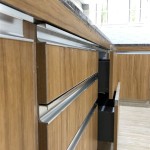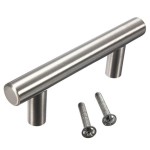Kitchen Wall Tile Before Or After Cabinets: Which Comes First?
When it comes to kitchen renovations, the order of operations can be crucial. One of the most important decisions you'll make is whether to install kitchen wall tile before or after the cabinets. Both options have their own advantages and disadvantages, so it's important to weigh the pros and cons carefully before making a decision.
In this article, we'll explore the essential aspects of installing kitchen wall tile before or after cabinets. We'll discuss the benefits and drawbacks of each approach, as well as provide helpful tips to ensure a successful installation.
Installing Kitchen Wall Tile Before Cabinets
Benefits:
Installing kitchen wall tile before cabinets offers several advantages. Firstly, it allows for a cleaner and more seamless transition between the tile and the cabinets. The tile can be cut precisely to fit around the cabinets, creating a polished and professional look.
Secondly, installing tile before cabinets makes it easier to create a backsplash that extends all the way to the ceiling. This can create a dramatic and visually appealing focal point in your kitchen.
Finally, tiling before cabinets can help to protect your walls from moisture and heat damage. The tile will act as a barrier between the walls and the stove, oven, and other appliances.
Drawbacks:
There are a few potential drawbacks to installing kitchen wall tile before cabinets. Firstly, it can be more difficult to access the walls behind the cabinets if you need to make repairs or adjustments.
Secondly, tiling before cabinets can make it more challenging to level the cabinets correctly. The tile can create an uneven surface, which can make it difficult to ensure that the cabinets are all perfectly aligned.
Installing Kitchen Wall Tile After Cabinets
Benefits:
Installing kitchen wall tile after cabinets offers several advantages as well. Firstly, it allows you to more easily access the walls behind the cabinets. This can be helpful if you need to make repairs or adjustments in the future.
Secondly, tiling after cabinets makes it easier to level the cabinets correctly. The cabinets can be installed first, and then the tile can be cut to fit around them. This ensures that the cabinets are all perfectly aligned.
Finally, installing tile after cabinets can help to protect the cabinets from damage. The tile will act as a barrier between the cabinets and the walls, protecting them from moisture and heat damage.
Drawbacks:
There are a few potential drawbacks to installing kitchen wall tile after cabinets. Firstly, it can create a less seamless transition between the tile and the cabinets. The tile may not be able to be cut precisely to fit around the cabinets, which can result in a less polished look.
Secondly, installing tile after cabinets can make it more difficult to create a backsplash that extends all the way to the ceiling. This is because the cabinets will be in the way, making it difficult to access the upper portions of the wall.
Which is Right for You?
The decision of whether to install kitchen wall tile before or after cabinets is ultimately a personal one. Both options have their own advantages and disadvantages, so it's important to weigh the pros and cons carefully before making a decision.
If you're looking for a clean and seamless look, and you're not concerned about accessing the walls behind the cabinets, then installing tile before cabinets may be the best option for you.
However, if you're looking for an easier installation, and you're concerned about leveling the cabinets correctly, then installing tile after cabinets may be the better choice.
Tips for a Successful Installation
No matter which order you choose to install your kitchen wall tile, there are a few tips that can help to ensure a successful installation:
- Make sure to prepare the walls properly before installing the tile. This includes cleaning the walls, removing any old paint or wallpaper, and repairing any cracks or holes.
- Use a high-quality tile adhesive and grout. This will help to ensure that the tile and grout are durable and long-lasting.
- Follow the manufacturer's instructions for installing the tile and grout. This will help to ensure that the installation is done correctly.
- Allow the tile and grout to dry completely before using the kitchen. This will help to prevent the tile or grout from being damaged.
By following these tips, you can ensure that your kitchen wall tile installation is a success.

Painted Kitchen Cabinets And Tile Backsplash A Year Later House Mix

Painted Kitchen Cabinets And Tile Backsplash A Year Later House Mix

How To Diy Paint Your Kitchen Backsplash Tile So It Lasts For Years Mary Jo On The Go

How I Transformed My Kitchen With Paint House Mix

Painting Cabinets Before Or After Changing The Backsplash

I Painted Our Kitchen Tile Backsplash The Wicker House

How To Install A Subway Tile Kitchen Backsplash Young House Love

Turning An Ugly Backsplash Into Something That S Quite Nice To Look At And Temporary Door Sixteen

Should You Install Tile Floor Before Or After Cabinets
How To Paint A Tile Backsplash Beautiful Mess
Related Posts








